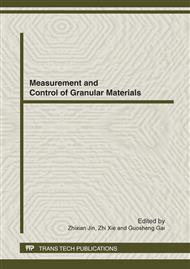p.192
p.196
p.200
p.203
p.207
p.212
p.216
p.220
p.224
Control and Characterization of Materials Recovered from Mechanical Recycling of Waste Refrigerators
Abstract:
The recycling of e-waste in general allows the recovery of valuable materials, which can be reused as secondary raw materials. This implies, however, to adopt reliable treatment processes to achieve specific standard characteristics. Actually, the market standards are very strict and strongly affect the economic value of recovered materials. In particular, waste refrigerators recycling allows the recovery of different plastic materials together with metallic fractions (ferrous and non ferrous), which economic value is considerably increasing in the last years. Only in Italy, in 2010 approximately 66,000 t of waste refrigerators were collected for recycling. An efficient recycling treatment could assure about 85% of recovery rate. In this paper, a model to control and characterize the materials recovered from mechanical recycling of cabinets dismantled from of waste refrigerators is proposed. The treatment flow sheet consists of various separation and comminution operations. A mathematical model was implemented to determine a partition function, utilizing data obtained from the treatment of 100 waste refrigerator carcasses, carrying out mass balance of recovered materials. The partition function was adopted to determinate control parameter to assess the quality of the recovered products, and, therefore, of the applied technologies. The results shown as the best recovery rate of waste refrigerator carcasses were reached for ferrous metals (97.5%) together with high purity (more than 98%). Also other metals reached a good quality (about 87% for non-ferrous metals, 92% for mixed recyclable plastics), but with lower recovery rates.
Info:
Periodical:
Pages:
207-211
Citation:
Online since:
April 2012
Authors:
Price:
Сopyright:
© 2012 Trans Tech Publications Ltd. All Rights Reserved
Share:
Citation:


